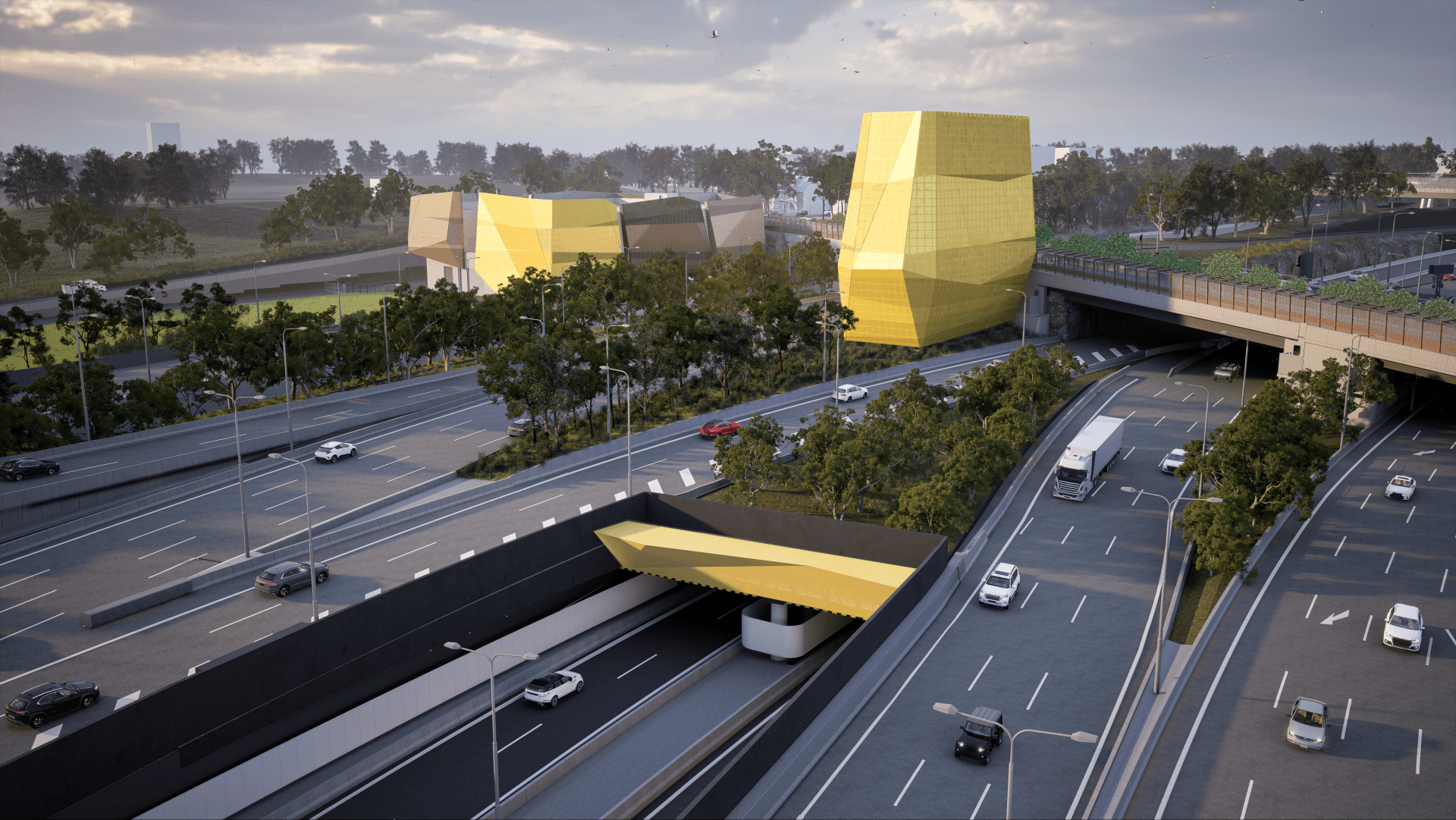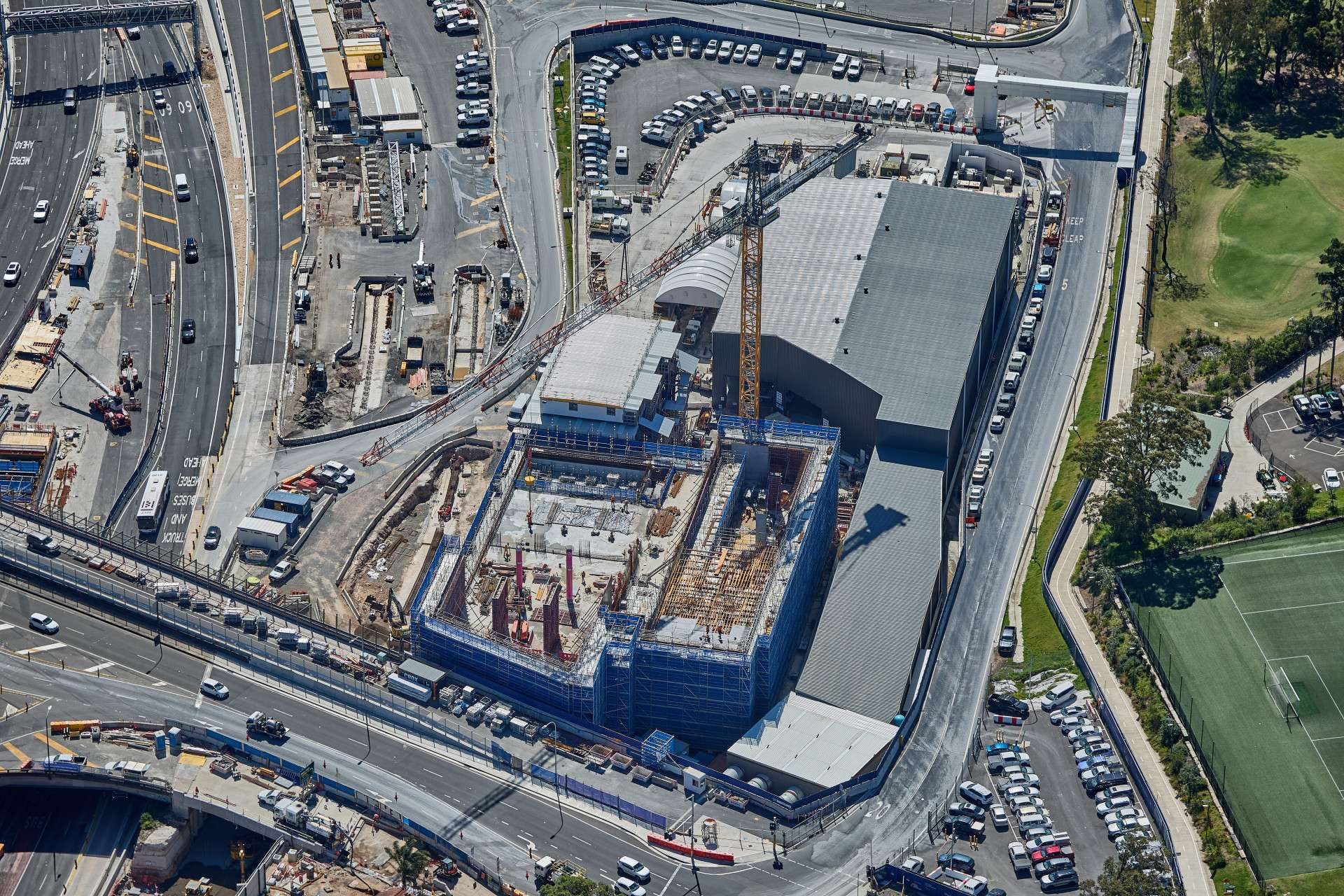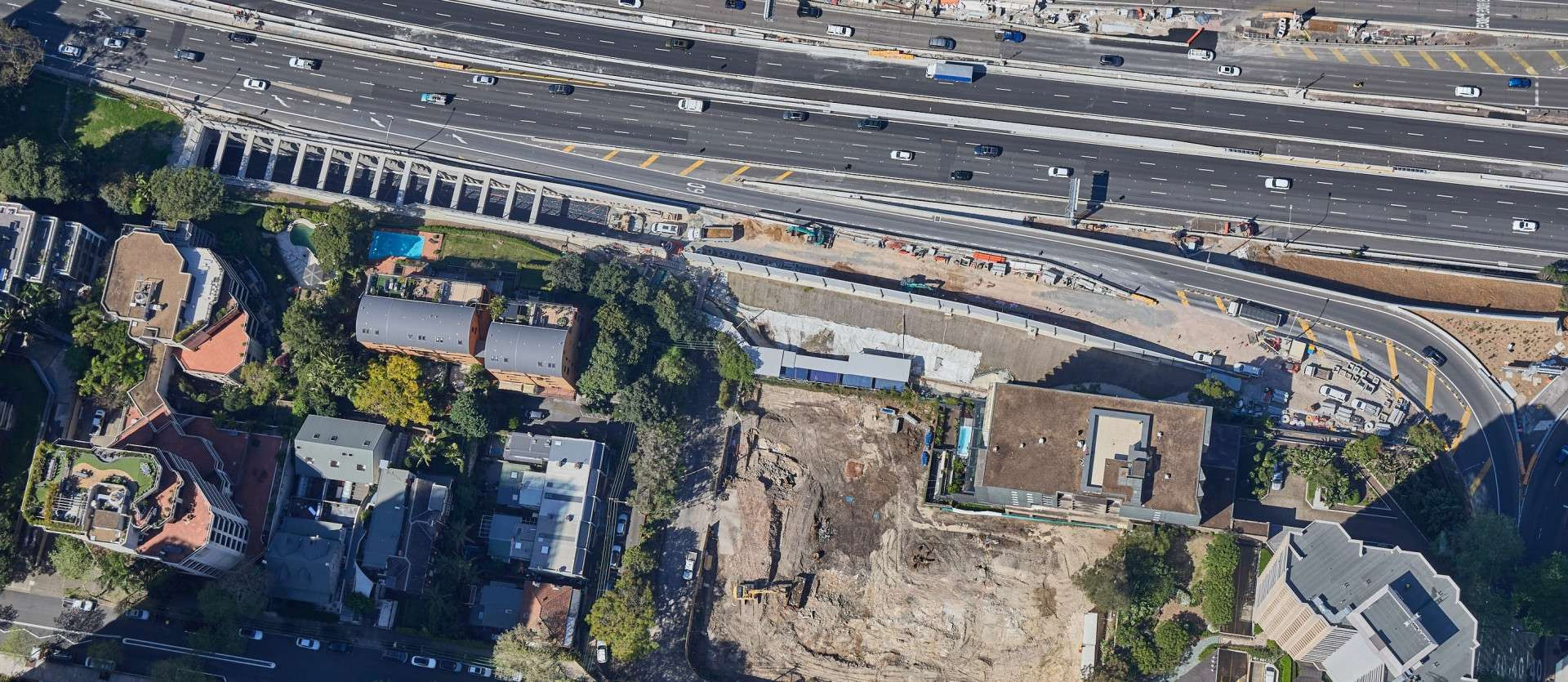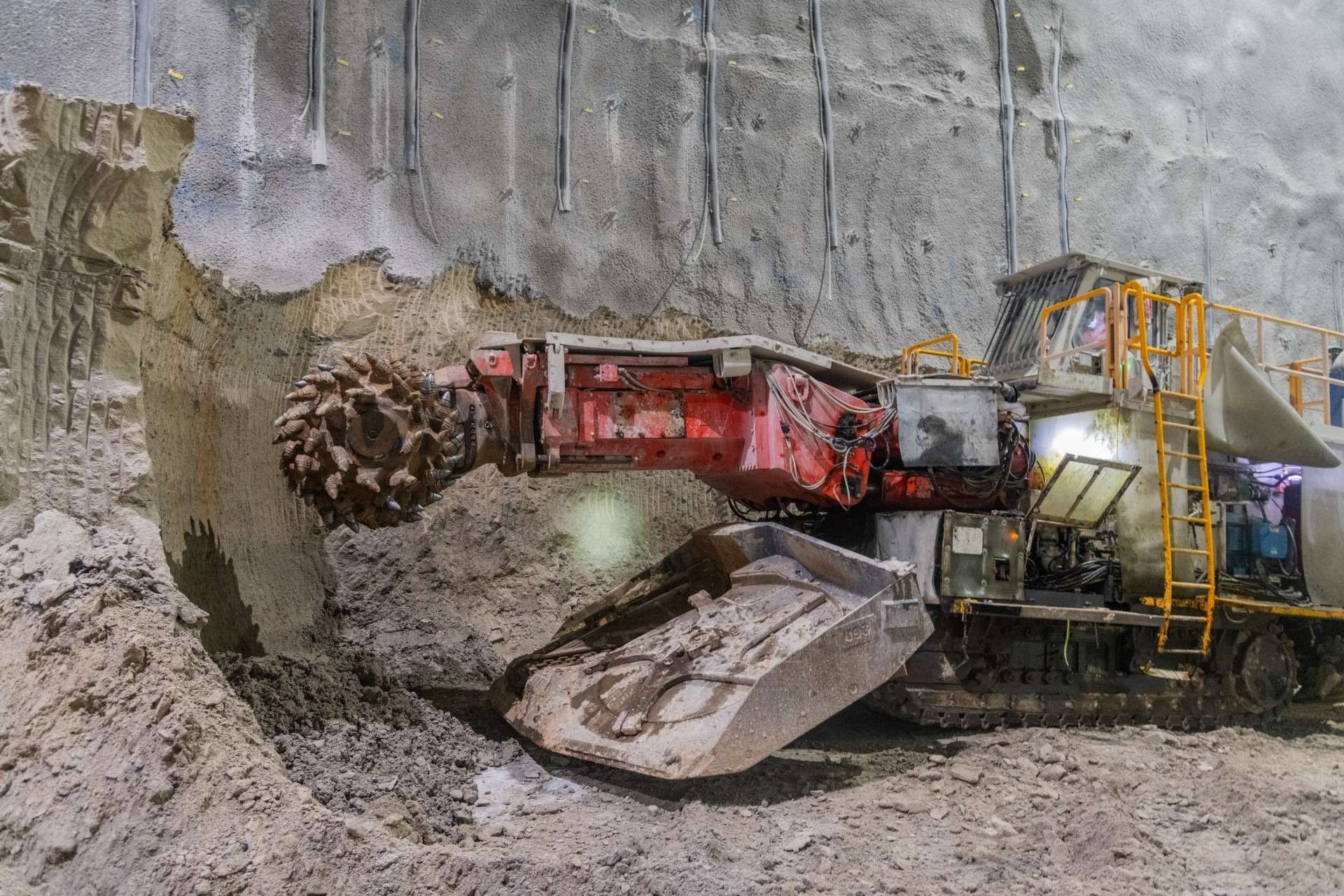Western Harbour Tunnel will connect the Warringah Freeway in North Sydney to the WestConnex M4 and M8 at Rozelle Interchange, helping drivers bypass the CBD and making it easier, faster and safer to get around Sydney.
To the north, these tunnels connect to the Warringah Freeway at Cammeray. The entry and exit points for Western Harbour Tunnel in the north are:
Warringah Freeway (main tunnel portal exit and entry point)
Berry Street on ramp
Falcon Street off ramp.
A total of six sites (four at Cammeray) are being used during the construction of Western Harbour Tunnel between Cammeray and Waverton.

Artist impression of aerial view of the Cammeray ventilation facilities and Warringah Freeway portal.
Cammeray Sites
Our temporary construction sites at Cammeray are being used to build the tunnel’s above and below ground ventilation infrastructure which includes the ventilation outlet and building (located near the Ernest Street bridge), as well as the main tunnel portal (entry and exit portal) on Warringah Freeway.
Construction of the ventilation building and outlet is progressing well. Excavation of the ventilation outlet shaft and connection to the tunnels and ventilation building has now been completed. Construction of the ventilation building concrete structure is well underway. Construction of the concrete ventilation outlet structure (above ground level) has now started.
Current work activities are shown on our construction notifications map.

Cammeray ventilation building
Ridge Street site
The Western Harbour Tunnel Ridge Street site supports excavation of the Falcon Street off ramp and mainline tunnels, heading south.
The acoustic shed onsite helps manage noise, dust and light impacts from the tunnelling work and is also used to store the tunnel spoil (excavated material generated from tunnelling activities) before it is loaded on to trucks and removed from site.
Current work activities for the Ridge Street site are shown on our construction notifications map.
Berry Street site
This site supports construction of the southbound tunnel entrance ramp at Berry Street.
Current work activities for the Berry Street site are shown on our construction notifications map.
For more information on the final design of the Berry Street on ramp, please refer to the approved Place, Design and Landscape Plan (part 1) here.

Berry Street site
Tunnelling update
Tunnelling methodology:
Two types of tunnelling equipment are being used to build Western Harbour Tunnel:
roadheaders between Cammeray and Waverton, and at Birchgrove (north of Cove Street)
tunnel boring machines (TBMs) from Birchgrove(north of Cove Street), under Sydney Harbour to Waverton.
Tunnelling activities are approved to be carried out 24 hours a day, seven days a week.
To see the Western Harbour Tunnel alignment, and distance and depth measurements, click here to view the Tunnel Tool. We are completing the tunnels in phases. Below are the phases of activity that need to be carried out to make the tunnels operational::
Phase 1 – heading excavation which involves excavating the top of the tunnel and cross passages and stabilising the tunnel by installing large steel rods (rock bolts) into the rock layer and spraying concrete (shotcreting).
Phase 2 – benching excavation which involves excavating the floor of the tunnel.
Phase 3 – tunnel fit out which involves installing drainage and other mechanical and electrical services to the new tunnel. Additional excavation activities are also needed to complete drainage and service installation work. Some of this work involves high noise impact activities.
Phase 4 – tunnel pavement and structural work which involves installing the road pavement, signage, line marking, architectural panels and barriers in the tunnel, and structural fit out of the cross passages (linking the tunnels together).
Read our latest monthly tunnelling notification for more information.
What will this mean for you?
Some residents and businesses along the tunnel alignment may experience ground-borne noise and vibration when tunnelling activities are being carried out.
Each individual’s experience will vary due to a range of factors such as a property’s distance to the tunnel, ground conditions, building types, existing background noise, and the building materials used.
To find out more about ground-borne noise and vibration, see the ground movement, vibration and ground-borne noise Fact Sheet.
Want more information on tunnelling?
Explore our tunnel tool to see the Western Harbour Tunnel alignment, and distance and depth measurements
Find out more about work activities happening in the project area.
Register for updates
Sign up to receive relevant notifications, construction updates and information right to your email.
